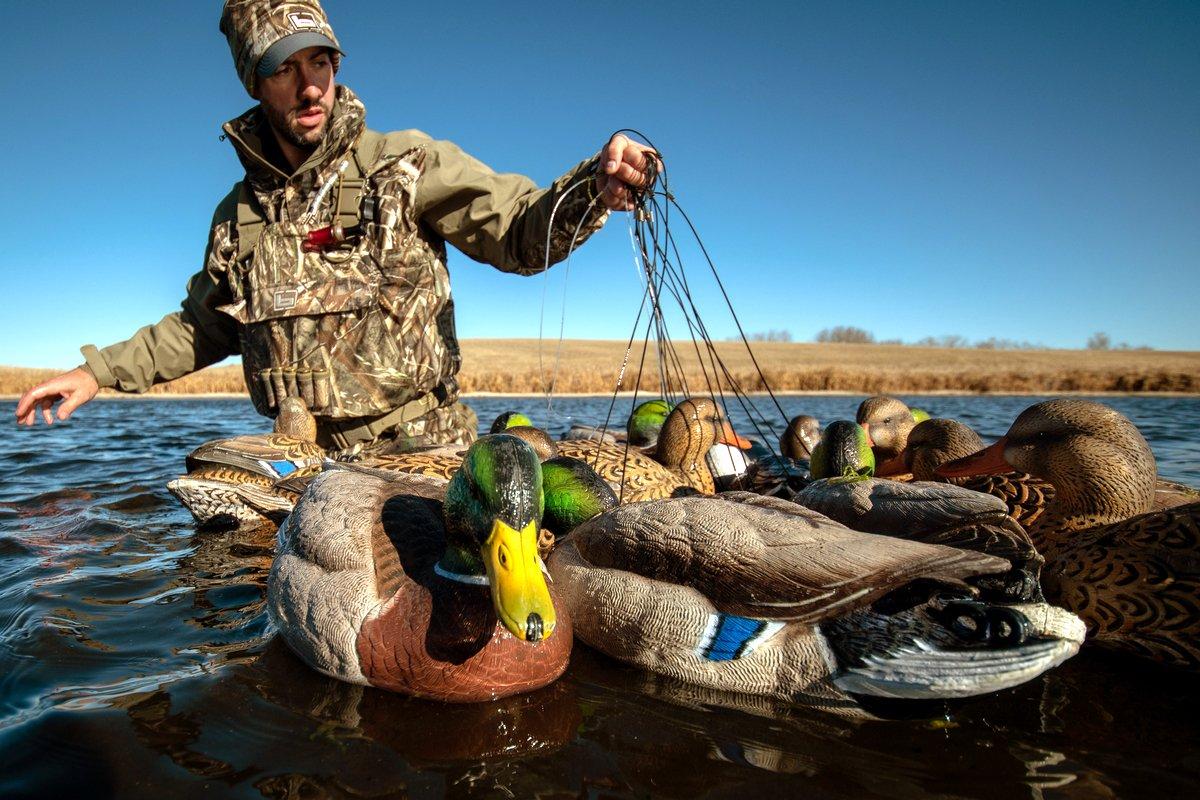These mess-ups could be called the 5 Sins of Setting Decoys
Editor's note: This blog originally appeared on Realtree.com on May 12, 2016.
Your decoys are rigged and ready, and you can't wait to put them to work. But even the best-looking fakes fall flat when they're not deployed correctly. And if you're dealing with finicky ducks and geese, even the smallest oversights can sink your hunt. With that in mind, here's a brief rundown of the five biggest mistakes to avoid when putting out decoys.
1. Bunching Up
Don't place decoys too close to each other. Ducks and geese don't group tightly together unless they're on alert or the weather is bad, and you don't usually want to replicate those conditions. Spacing is something of an art, and there's no hard-and-fast rule about the minimum distance between blocks. Just try to space decoys so the rig appears natural. As a general rule, give each block enough space to maximize visibility and define the shape of your spread. If the conditions are relatively calm, spread decoys out more to make it appear like your birds are loafing. The only exception to this rule is during high winds or in waves, in which case I'll group my dekes close together.
2. Filling in the Hole
Make sure you create a well-defined, open landing area in large goose and puddle-duck spreads. Otherwise, birds tend to finish outside the decoys or pass over while looking for an opening. The hole can be a pocket formed by a U- or J-shaped spread, an open area between two or three groups of decoys or simply an open hole amid a mass of blocks. Make sure to position the landing hole correctly. It should be in easy range of the shooters but slightly offset from your boat or blinds. You don't want birds looking right at you as they cruise upwind toward the kill hole.
3. Forgetting the Divers
Never set your spread so diving ducks cannot see some open water behind (that is, directly upwind of) the decoys. Divers associate open water with safety, and they're more comfortable committing to setups with water visible beyond the decoys. That's no problem when hunting open water, but it can be tricky near shorelines, like when you're hunting the western shore of a lake in a stiff westerly breeze. Try to angle your spread so some water — not shoreline — lies beyond the blocks. You'll finish more birds.
Remember, too, that diving ducks love to fly over others divers on their approach. That's why J-hook spreads or a mass of multiple lines with a long tail extending downwind are proven setups. In recent years, however, some guides on hard-hunted waters (Wisconsin's section of the Mississippi River, for example) have started to notice divers shying away from such spreads because the birds see them so often. Instead, the guides use a long, loose mass of decoys to create the illusion of a raft of feeding or loafing birds. Follow their lead: Gauge hunting pressure and bird behavior on your favorite diver water, and choose an approach that makes sense.
4. Setting Too Few — or Too Many
What's the right number of decoys? Whatever gets results, of course. Generally, large spreads work best for big-water ducks or high-volume mallard and honker field shoots. A spread with 200 decoys (if you have them) isn't out of the question in either situation.
Conversely, when hunting streams or small potholes, a dozen or fewer blocks suffice. Packing too many fakes in a small area doesn't look natural. Make sure the decoys you use are visible and realistically arranged.
Use common sense for in-between scenarios. Two- to four-dozen blocks will probably work fine in marsh or river backwater situations. If most hunters are using similar spreads — and they might be, because boats made for those scenarios only hold so many decoys — consider cutting down or beefing up your rig to offer something different.
5. Letting Your Spread Stagnate
Ducks and geese usually flare at decoys that look like, well, decoys. Lifeless spreads on light-wind days won't work. Add motion to your rig however you like. It can be a feeder or two on jerk strings, one of the many motion machines available nowadays or even tried-and-true spinning-wing decoys. Spinners don't work like they used to (they were money 20 years ago when birds had never seen them before), but they remain useful in some situations, especially on big water or when hunting fields. Use models with remote-control on-off switches so you can stop the wings as ducks begin their final approach, usually about 60 yards. Ducks will finish better. If you're targeting geese, avoid spinners. Instead, use full-body decoys that balance and bob on motion stakes to create the illusion of a feeding flock.
Click here for more Realtree waterfowl hunting content. And check us out on Facebook.








